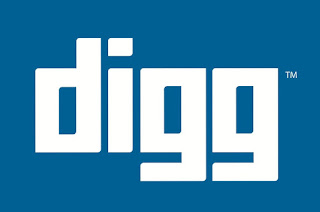How companies utilize the groundswell
For the past few weeks, we’ve discussed ways to engage the groundswell and how Disney utilized fan’s anger for its benefit. In today’s post, we’ll discuss not only how you can embrace the groundswell, but how you can use it within your own company.
In their book “Groundswell: Winning in a World Transformed by Social Technologies,” Charlene Li and Josh Bernoff show how we can benefit from embracing the groundswell, engaging with audiences on Twitter, and using the groundswell within our own companies.
Embracing the groundswell
Li and Bernoff stress the importance of embracing the groundswell. By this, they mean that we should embrace the opinions and potential ideas that audiences have for our companies. Innovation is important, but by embracing the groundswell, companies can innovate much more quickly.
Innovation will happen quicker because, as Li and Bernoff write, “Customers don’t take long to tell you what they want” (p. 183).
The authors gave an example of a dog-lover, George, who described his dog’s ideal meal to Del Monte Foods. Bacon, eggs, and a smattering of ketchup was his answer. Many others responded similarly to Del Monte, and the company decided to launch a new product called Snausages Breakfast Bites. The product was a hit because Del Monte chose to listen to their customers and embrace what they wanted.
Another example of embracing the groundswell comes from Starbucks. Like Del Monte, Starbucks values the input of its customers. To hear their feedback, Starbucks set up a website with the sole purpose of listening to customers’ ideas. “My Starbucks Idea” lets consumers submit their own ideas for the massive coffee company. Users can submit ideas and Starbucks may implement them in its business model.
Both of these examples show how companies embraced the groundswell and took ideas from their audience.
Tapping the groundswell with Twitter
Using Twitter is essential in engaging the groundswell. It’s a place where companies and consumers can converse directly and candidly. Li and Bernoff mention that Twitter is useful for “turning potential detractors … into promoters” (p.197).
They highlighted an example of a blogger, Fadra, who tweeted at McDonald’s that her son received a girl toy in his Happy Meal instead of a boy toy. A McDonald’s social media employee responded to Fadra’s tweet, and soon enough Fadra’s son received a coveted Wolverine toy courtesy of McDonald’s.
Another Twitter interaction, however, proved much more lucrative. Carter Wilkerson decided to tweet at Wendy’s asking how many retweets he would need for a year-long supply of free chicken nuggets. Wendy’s responded with the astronomical number of 18 million.
The groundswell claimed another victory by winning Carter his nuggets. Although it didn’t get 18 million retweets, Carter’s tweet became the most retweeted tweet ever, a title previously held by Ellen Degeneres, who even invited Carter on her show.
Not only did Wendy’s gave Carter a year-long supply of nuggets, it also gave $100,000 to the Dave Thomas Foundation for Adoption.
Though Carter wasn’t a potential detractor, like Fadra, he certainly became a promoter for Wendy’s. His tweet cemented itself as the most retweeted tweet of all time, and Wendy’s is inherently attached to that title. Wendy’s decision to give Carter free nuggets and give a charitable donation also makes for a good story, which is a valuable form of social media marketing.
The groundswell inside your company
The groundswell isn’t just limited to your audience. You can engage it within your own company as well. Your employees, Li and Bernoff argue, are some of you biggest assets. They write, “[Your employees] have something in common: they work for you. And they ought to have a common goal: your company's success” (p. 234).
Employees can offer valuable ideas and insights for you company. The key to getting those ideas and insights, however, is to give employees a way to offer them.
The best example Li and Bernoff provide is the program that Best Buy started called Blue Shirt Nation. This program was a website that allowed Best Buy sales associates to offer feedback about Best Buy’s policies, talk about their experiences, or help fellow employees. This site gave Best Buy useful feedback from its own employees, and it allowed employees to help each other out by offering advice.
Best Buy was successful in engaging the groundswell inside its own company. It allowed employees to critique its business and let employees seek help from others.
What do you think about these facets of the groundswell? Let me know in the comments below!
In their book “Groundswell: Winning in a World Transformed by Social Technologies,” Charlene Li and Josh Bernoff show how we can benefit from embracing the groundswell, engaging with audiences on Twitter, and using the groundswell within our own companies.
Embracing the groundswell
Li and Bernoff stress the importance of embracing the groundswell. By this, they mean that we should embrace the opinions and potential ideas that audiences have for our companies. Innovation is important, but by embracing the groundswell, companies can innovate much more quickly.
Innovation will happen quicker because, as Li and Bernoff write, “Customers don’t take long to tell you what they want” (p. 183).
The authors gave an example of a dog-lover, George, who described his dog’s ideal meal to Del Monte Foods. Bacon, eggs, and a smattering of ketchup was his answer. Many others responded similarly to Del Monte, and the company decided to launch a new product called Snausages Breakfast Bites. The product was a hit because Del Monte chose to listen to their customers and embrace what they wanted.
Another example of embracing the groundswell comes from Starbucks. Like Del Monte, Starbucks values the input of its customers. To hear their feedback, Starbucks set up a website with the sole purpose of listening to customers’ ideas. “My Starbucks Idea” lets consumers submit their own ideas for the massive coffee company. Users can submit ideas and Starbucks may implement them in its business model.
Both of these examples show how companies embraced the groundswell and took ideas from their audience.
Tapping the groundswell with Twitter
Using Twitter is essential in engaging the groundswell. It’s a place where companies and consumers can converse directly and candidly. Li and Bernoff mention that Twitter is useful for “turning potential detractors … into promoters” (p.197).
They highlighted an example of a blogger, Fadra, who tweeted at McDonald’s that her son received a girl toy in his Happy Meal instead of a boy toy. A McDonald’s social media employee responded to Fadra’s tweet, and soon enough Fadra’s son received a coveted Wolverine toy courtesy of McDonald’s.
Another Twitter interaction, however, proved much more lucrative. Carter Wilkerson decided to tweet at Wendy’s asking how many retweets he would need for a year-long supply of free chicken nuggets. Wendy’s responded with the astronomical number of 18 million.
HELP ME PLEASE. A MAN NEEDS HIS NUGGS pic.twitter.com/4SrfHmEMo3— Carter Wilkerson (@carterjwm) April 6, 2017
The groundswell claimed another victory by winning Carter his nuggets. Although it didn’t get 18 million retweets, Carter’s tweet became the most retweeted tweet ever, a title previously held by Ellen Degeneres, who even invited Carter on her show.
Not only did Wendy’s gave Carter a year-long supply of nuggets, it also gave $100,000 to the Dave Thomas Foundation for Adoption.
.@carterjwm is now the most retweeted tweet of all-time. That’s good for the nuggets, and $100k to @DTFA. Consider it done. #nuggsforcarter pic.twitter.com/k6uhsJiP4E— Wendy's (@Wendys) May 9, 2017
Though Carter wasn’t a potential detractor, like Fadra, he certainly became a promoter for Wendy’s. His tweet cemented itself as the most retweeted tweet of all time, and Wendy’s is inherently attached to that title. Wendy’s decision to give Carter free nuggets and give a charitable donation also makes for a good story, which is a valuable form of social media marketing.
The groundswell inside your company
The groundswell isn’t just limited to your audience. You can engage it within your own company as well. Your employees, Li and Bernoff argue, are some of you biggest assets. They write, “[Your employees] have something in common: they work for you. And they ought to have a common goal: your company's success” (p. 234).
Employees can offer valuable ideas and insights for you company. The key to getting those ideas and insights, however, is to give employees a way to offer them.
The best example Li and Bernoff provide is the program that Best Buy started called Blue Shirt Nation. This program was a website that allowed Best Buy sales associates to offer feedback about Best Buy’s policies, talk about their experiences, or help fellow employees. This site gave Best Buy useful feedback from its own employees, and it allowed employees to help each other out by offering advice.
Best Buy was successful in engaging the groundswell inside its own company. It allowed employees to critique its business and let employees seek help from others.
What do you think about these facets of the groundswell? Let me know in the comments below!





You provided a lot of great examples here! I also wrote about Starbucks and MyStarbucksIdea as a great way to embrace the groundswell. But McDonald's and Wendy's being so responsive and interactive with their customers on social media are clearly other great examples. I love Wendy's Twitter (usually it is very fun and they troll competitors a lot), but this activity you noted here definitely paid off for them in a big way.
ReplyDeleteHi jack,
ReplyDeleteThanks for your sharing, you putted forward some good examples from text. Starbucks is a good brand on groundswell. Not only you analyze it, but also I've seen other people mentioned in their blog in the last few weeks. Given any brand, Listening main customers’ suggestions is very important
Hi Jack, I like your example of Wendy's. In this digital age, everyone could be a promotor, Carter, as one of them. Wendy's took responsibility for its response, and the interaction indeed exerted influence for Wendy's. You will never know which interaction with followers could make big sparks.
ReplyDeleteHi Jack,
ReplyDeleteThese are such interesting examples! I had no idea Wendy's did he whole lifetime supply of chicken nuggets because where can I sign up? Also, yes, companies nowadays need to find different ways to engage their employees. And obviously, tapping into the groundswell is a great way to do that. I was thinking about project management platforms like Basecamp and Monday.com have changed the game! Thanks for sharing, I enjoyed reading it. Now I'm going to watch Ellen interviewing the chicken nuggets guy :)
The Snausages Breakfast Bites example is an interesting look at how anything can be marketed--including dog food. I was listening to a talk from Seth Godin where he talked about how dog food isn't really for dogs but for their owners. In reality, I think our pets will eat anything you give them although some options are better than others. However, dog food companies have tailored their messages to make us care about whether we should be giving our dogs the "tuna meal" or "tuna feast"...it's just tuna.
ReplyDeleteHere's the link to the talk if you're interested! https://www.youtube.com/watch?v=rdUeq09cGJ0